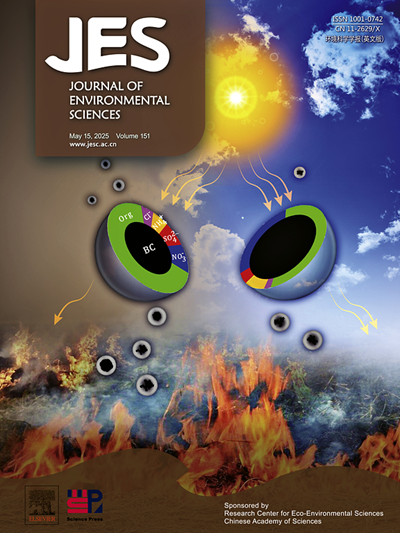Bioaccumulation of legacy and emerging per- and polyfluoroalkyl substances in hydroponic lettuce and risk assessment for human exposure
IF 5.9
2区 环境科学与生态学
Q1 ENVIRONMENTAL SCIENCES
引用次数: 0
Abstract
Reclaimed water for irrigation or hydroponic cultivation provides exposure pathways for per- and polyfluoroalkyl substances (PFAS) to enter the human food chain. This study employed hydroponic methods to investigate the behavior of legacy PFAS and emerging chlorinated polyfluoroalkyl ether sulfonic acids (Cl-PFESAs) in lettuce grown under environment-related exposure levels and assessed the human exposure risks from consuming contaminated lettuce. Overall, PFAS in lettuce were concentration-dependent, with long-chain PFAS tending to accumulate in roots and short-chain PFAS accumulating more in shoots. The enrichment of PFAS in lettuce was jointly influenced by their chain length and polar functional groups. Specifically, the root concentration factors (RCFs) of PFAS generally increased with increasing chain length, and RCF values of most perfluoroalkanesulfonic acids (PFSAs) were significantly higher than those of perfluoroalkyl carboxylic acids (PFCAs) with the same chain length (p < 0.01), while the translocation factors (TFs) exhibited opposite trends. RCF values of perfluorooctane sulfonate (PFOS) and its alternatives, Cl-PFESAs, were ranked as follows: 8:2 Cl-PFESA (mean: 139) > 6:2 Cl-PFESA (28.6) > PFOS (25.7), which was attributed to the increased molecular size and hydrophobicity resulting from the insertion of ether bonds and additional CF2 in 8:2 Cl-PFESA. Notably, TF value of 8:2 Cl-PFESA (mean: 0.007) was the smallest among all PFAS, indicating 8:2 Cl-PFESA was difficult to transfer to nutritional compartments. Adults and children would exceed the most conservative health-based reference dose (RfD) by consuming approximately 15.9–148 g and 7.92–74.0 g of contaminated lettuce per day, implying high health risks.

求助全文
约1分钟内获得全文
求助全文
来源期刊

Journal of Environmental Sciences-china
环境科学-环境科学
CiteScore
13.70
自引率
0.00%
发文量
6354
审稿时长
2.6 months
期刊介绍:
The Journal of Environmental Sciences is an international journal started in 1989. The journal is devoted to publish original, peer-reviewed research papers on main aspects of environmental sciences, such as environmental chemistry, environmental biology, ecology, geosciences and environmental physics. Appropriate subjects include basic and applied research on atmospheric, terrestrial and aquatic environments, pollution control and abatement technology, conservation of natural resources, environmental health and toxicology. Announcements of international environmental science meetings and other recent information are also included.
 求助内容:
求助内容: 应助结果提醒方式:
应助结果提醒方式:


